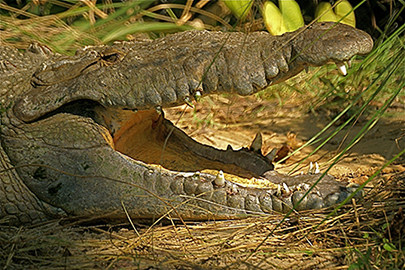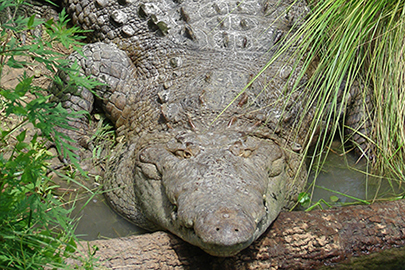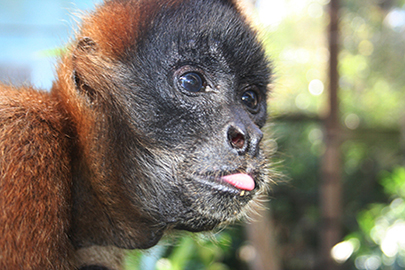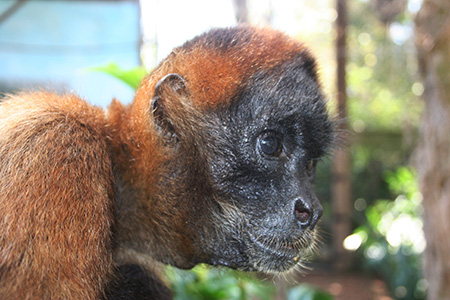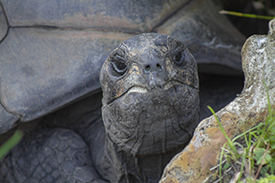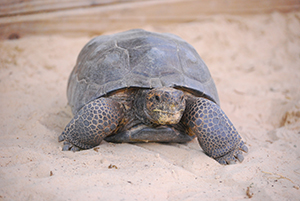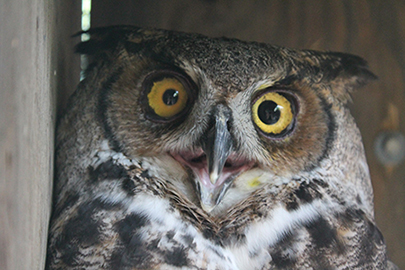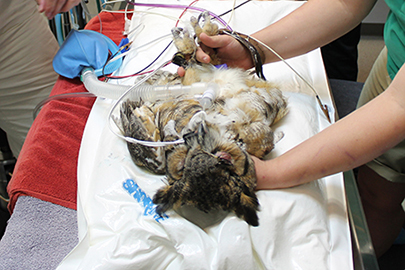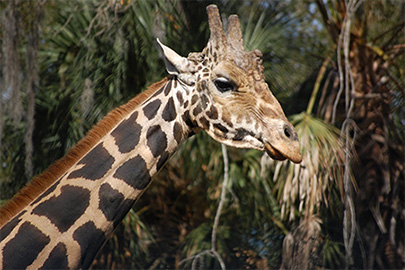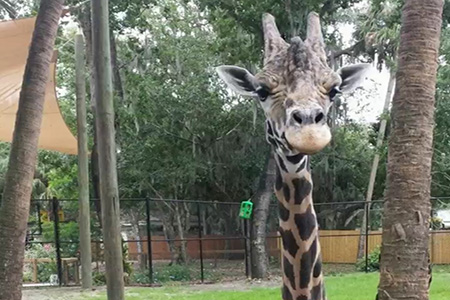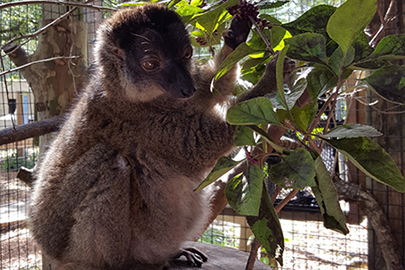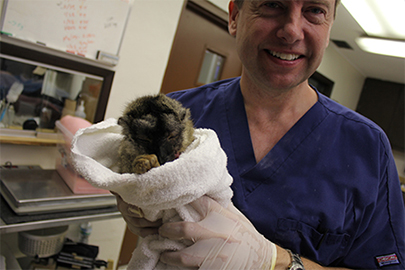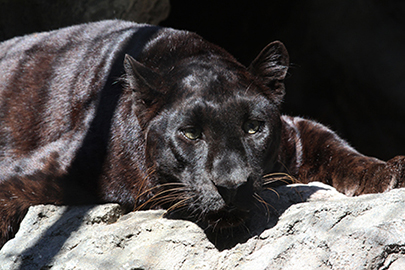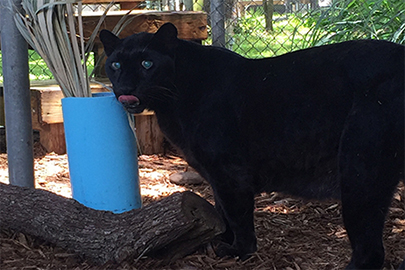Taking Care of Older Animals at the Central Florida Zoo
Growing old is a part of life and often requires changes in lifestyle, diet, care and even living arrangements. The same holds true for animals living at the Central Florida Zoo & Botanical Gardens! You probably didn’t realize this but; many of the Zoo’s most popular animals are reaching, and exceeding, life expectancy for their species living in zoos.
Here at the Central Florida Zoo & Botanical Gardens, the care for our animals is led by a dedicated team that includes a full-time veterinarian, a full-time veterinary technician, more than 25 animal care specialists, an animal nutrition team, along with numerous interns and volunteers. In addition to all the experience and expertise on staff, our team also often consult with experts at other facilities throughout the Association of Zoos & Aquariums (AZA) network to share information and discuss treatment plans.
In their natural habitat, animals are often unable to overcome illness, injury or become prey as they age. Those in human care tend to live significantly longer—sometimes even doubling their life expectancy! All of the animals at the Central Florida Zoo & Botanical Gardens serve important roles as ambassadors for their wild counterparts, helping to educate and inspire our guests about conservation.
Ensuring the highest quality animal care is one of the most important responsibilities for our facility and we wanted to share a few examples of how we care for aging animals at our facility.
Marley
Species:
American Crocodile
Age: 50
This is a pretty special year—our American crocodile is turning the big 5-0! Florida is the only place in North America you can see this species in their natural habitat and showing off our ‘Croc has been a great way to teach people about the important role they play in the ecosystem. Though crocodiles can live well into their seventies, our animal care team is always on the lookout for physical and behavioral changes.
Big Guy
Species:
Black-Handed Spider Monkey
Age: 39
Even though spider monkeys can live to be in their fifties in human care, Big Guy, our black-handed spider monkey is considered geriatric at the age of 39. Big Guy’s teeth have worn down and our animal nutrition team has created a diet adapted to meet his needs. We continue to work with and learn from other Zoos as we care for aging spider monkeys.
Other older animals include:
Angel
Species: Aldabra Tortoise
Born around 1960

Big Guy
Species: American Alligator
Born around 1976

Willy
Species: Gopher Tortoise
Born around 1980

Out of Sight, Not Out of Mind
Retirement is sometimes necessary to ensure the animal care team can better meet the needs of an animal. These behind-the-scenes habitats are specially designed to meet the needs of an individual animal. Here is an update on some of our retirees!
Hal
Species: Great Horned Owl
Age: Around 20
Hal, the great horned owl, was evacuated from the Louisiana Nature Center during Hurricane Katrina. Though the hurricane destroyed most medical records, Hal was assessed upon arrival at the Houston Zoo. Their veterinarian was able to determine his sex and estimate he was born between 1999 and 2001. Hal came to the Central Florida Zoo in 2007 as one of our education department’s animal ambassadors. He’s easily recognizable by his missing right wing and the scar on his left eye, a warrior mark he earned after surgery in 2014. As he began requiring more medical attention, the decision was made to let him retire so he can spend the rest of his days napping in between doctor appointments.
‘Til the End
The Central Florida Zoo & Botanical Gardens’ team is responsible for the care of these animals during their full life cycle, from birth to death. That includes the difficult end-of-life decisions. While never easy, caring for a growing collection of aging animals requires assessing quality of life and living up to our ethical obligation to ensure the highest quality of care for each animal.
As a continuously accredited member of AZA since 1986, the Central Florida Zoo & Botanical Gardens is dedicated to maintaining standards of excellence in all aspects of animal care and management. Through management tools, databases, policies, and breeding and transfer plans, the Zoo team works collaboratively with other AZA-accredited institutions to maintain a comprehensive animal collection plan. This includes participation in the AZA’s Species Survival Plan (SSP) Program for 34 threatened and endangered species, to aid in creating genetically healthy populations in human care and expanding the reach of conservation education.
Some of the Hardest Goodbyes
Emba
Species:
Rothschild Giraffe
Age: 22
Update: Due to extensive medical complications, we lost Emba on September 28, 2018. One of the most familiar faces at the Central Florida Zoo is Emba. He joined our all-male bachelor tower in 2014 for the grand opening of the giraffe exhibit. Throughout the years, he’s thrilled guests with his big appetite and willingness to reach his long neck over the habitat, meeting them face-to-face. In the past few months Emba’s mobility has been impacted by age related issues and he’s started to show signs of discomfort. Our veterinary team has recommended stall rest, which is why you may have noticed him in the back—away from the younger giraffes! Emba is being treated with anti-inflammatory medication for arthritis and his care team helps him practice rehabilitative exercises to minimize pain. The median life expectancy for a giraffe is 20 to 25 years.
Brown Lady & Snorts
Species:
Brown Lemur
Age: 36
Update: Due to age-related medical complications, we lost Snorts on October 8, 2019. Brown Lady also passed away from age-related medical illness on December 17, 2019. You expect to hear all sorts of animal noises at the Zoo but it’s always fun to see confused faces when the lemurs start to scream! We have three types of lemur—all endemic to the island of Madagascar. Brown Lady and Snorts are 36-year-old female brown lemurs and at 36-years old—among the oldest of their species in North America! These two little-old-ladies both have cataracts and receive joint supplements regularly to help maintain mobility. Lemurs in human care can live for more than 30 years, though the average is about 25.
Shasta
Species: Melanistic Leopard
Age: 23
Update: When it was clear medication was no longer a relief for age-related health issues, the decision was made to humanely euthanize her. Shasta passed away February 28, 2020. Shasta, the Zoo’s 23-year-old melanistic leopard, officially retired in March of this year. She was born in 1996 but didn’t become a CFZ resident until 2014! Her feisty personality and common cat-like antics made her a guest favorite. At 23-years-old, Shasta can’t climb as high or move as quickly as she once did. We’ve taken extra “handicapped” care to construct personalized ramps with grips and plenty of accessible perching areas for her to take cat-naps. Her “retirement home” is in the perfect spot for watching all the action behind the scenes.
